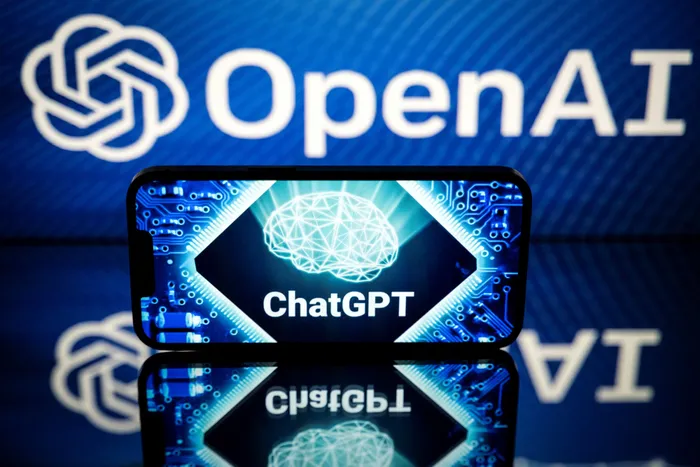Youth talks tech: is ChatGPT friend or foe?

Screens displaying the logos of OpenAI and ChatGPT in Toulouse, south-western France on January 23, 2023. ChatGPT is a conversational artificial intelligence software application developed by OpenAI. (Photo by Lionel BONAVENTURE/AFP)
By Kristen de Wet
The latest hit: ChatGPT has grown substantially in the past year and has had an astronomical effect on society.
The rise of the newest artificial intelligence has caused many workers to lose their jobs due to its unlimited capabilities and resources.
According to Goldman Sachs, up to 300 million full-time jobs could be lost across the world because of the automation that ChatGPT and other AI tools could usher in.
ChatGPT has shown the world what AI is capable of. Although artificial intelligence has been around for almost more than a decade, people have lacked to see its true capabilities. ChatGPT is an AI chatbot that works by predicting the next word in a given text, based on the patterns it has learnt from a massive amount of data during its training process. It can use enormous amount of information to generate a desired outcome.
One thing a computer program, such as ChatGPT, could not accomplish was the ability to read between the lines and emotionally connect with people. As mentioned in a previous article by Wired, the problem is that most emotional AI is based on flawed science.
Emotional AI algorithms, even when trained on large and diverse data sets, reduce facial and tonal expressions to an emotion without considering the social and cultural context of the person and the situation.
The biggest question asked is: Where to draw the line? Should artificial intelligent programs be allowed in schools?
The use of AI in education can have enormous effects on children as it gives them access to multiple sources of knowledge and information. However, it could also be misused during these crucial development phases for children and have many negative affects on their creative thinking capabilities.
With AI increasing in its astonishing new features every day, when will it end? When hours of work can be done in a moment, why are people even required? Well, the simple answer is that people are not so easily replaceable. People have an ability to not only look at the facts and think with their heads but to think with their hearts and understand people.
As much as ChapGPT can create human-like content, it can never replace people entirely, although it could do some tasks and cut costs of companies, like salary expenses, by employing fewer workers.
Once again, the question remains: Are algorithms such as ChatGPT a friend, providing important information and improving productivity or is it a foe, lowering the employment rate and limiting necessary job opportunities?

BUSINESS REPORT